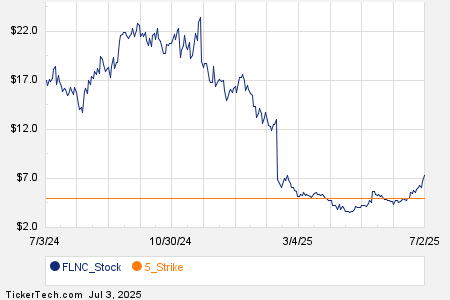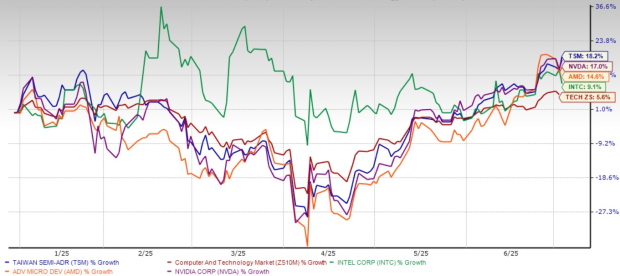Arm Holdings (NASDAQ: ARM) stock shot up big-time earlier this year following the release of its fiscal 2024 third-quarter results in February, which was not surprising, as management pointed out that the growing demand for artificial intelligence (AI) chips is turning out to be a catalyst for its business. However, things have been going downhill for the British chip designer since then.
Arm stock hit a 52-week high on Feb. 12, fueled by an impressive set of results that beat the market’s expectations and guidance that exceeded analysts’ estimates. However, shares of the company have slipped 27% since then, and its latest quarterly results don’t seem to be helping, either.
Shares of Arm dropped more than 2% after the company released fiscal 2024 fourth-quarter results (for the three months ending March 31) on May 8. Let’s see why that was the case and check if the pullback in the company’s stock over the past three months is a buying opportunity.
Arm Holdings crushed expectations, but lagged on one front
Arm Holdings reported non-GAAP (generally accepted accounting principles) earnings of $0.36 per share on revenue of $928 million in the previous quarter. The numbers exceeded the higher end of the company’s guidance and were well ahead of analysts’ expectations of $0.30 per share in earnings and $880 million in revenue. Arm’s revenue shot up 47% on a year-over-year basis, while the bottom line surged remarkably from just $0.02 per share.
The company’s guidance for the current quarter was also ahead of Wall Street’s estimates. Arm has guided for $900 million in revenue and $0.34 per share in earnings for the first quarter of fiscal 2025. Analysts would have settled for $0.31 per share in earnings on $866 million in revenue.
The company’s guidance indicates that its top line is on track to jump 33% year over year. However, investors were not impressed by the company’s full-year guidance.
Arm is forecasting $3.95 billion in fiscal 2025 revenue, which would be a 22% increase from fiscal 2024 revenue. Its earnings are expected to grow at a similar pace to $1.55 per share at the midpoint of its guidance range. While the bottom-line forecast is a penny higher than the consensus estimate of $1.54 per share, the top-line estimate has fallen slightly short of the $3.99 billion expectation.
However, if we take a closer look at some of the company’s key metrics, it won’t be surprising to see Arm eventually ending the year with stronger revenue growth and beating market expectations.
The stock seems set for a solid comeback
Arm Holdings is reaping the benefits of the booming demand for AI chips. Though the company doesn’t manufacture its own chips, it licenses its architecture and chip designs to chipmakers that deploy Arm’s intellectual property (IP) for developing processors, which are eventually deployed in data centers and consumer electronics devices such as smartphones and computers.
Arm CEO Rene Haas said on the company’s latest earnings conference call, “What we are seeing is, because Arm has the largest installed base of CPUs on the planet and has over 70% of the world’s population using those CPUs, it’s natural that, as these AI workloads are now being moved anywhere from the edge devices to the training data center, that they need support from an Arm CPU standpoint.”
This explains why the company has seen a sharp acceleration in the number of licensing agreements, with more chipmakers turning to its IP to design AI chips. More specifically, Arm finished the previous quarter with 31 Arm Total Access (ATA) agreements, up from 18 in the same period last year. The company says that the “target markets for these licensees include AI-enabled smartphones, servers, and embedded computing.”
ATA gives chipmakers and device manufacturers access to Arm’s complete suite of IP, software, development tools, physical design, and support and training so that they can speed up their development process and bring chips to the market faster. The increase in the number of ATAs has allowed the company to build a solid revenue pipeline.
This is evidentfrom the 45% year-over-year increase in the company’s remaining performance obligations (RPO) to $2.5 billion. This metric refers to the total future value of a company’s contracts that are yet to be fulfilled. Arm credited the healthy year-over-year growth in this metric to “multiple high-value, long-term agreements,” which can be attributed to the growing adoptionof the company’s AI-focused Armv9 architecture.
The company is currently getting most of its royalty revenue from chips that are based on the Armv8, Armv7, and older designs. Armv9 currently constitutes a small portion of the company’s royalty revenue. However, the company is witnessing increased adoption of the v9 platform and expects the transition to continue thanks to AI.
The good news for Arm is that v9 commands a “substantially higher royalty per chip than previous generation architectures,” in the company’s words. As a result, Arm reported record royalty revenue of $514 million last quarter, an increase of 37% from the year-ago period. This line of revenue should ideally keep growing as the adoption of Armv9 accelerates.
This discussion explains why analysts are forecasting a nice jump in the company’s revenue.

ARM Revenue Estimates for Current Fiscal Year data by YCharts
Of course, the stock is currently expensive, with a price-to-earnings ratio of 375. However, the forward earnings multiple of 77 points toward a big increase in the company’s bottom line, which is why growth-oriented investors looking to add an AI stock to their portfolios can consider capitalizing on Arm’s pullback, as it could come out of its slump and deliver solid gains in the long run.
Should you invest $1,000 in Arm Holdings right now?
Before you buy stock in Arm Holdings, consider this:
The Motley Fool Stock Advisor analyst team just identified what they believe are the 10 best stocks for investors to buy now… and Arm Holdings wasn’t one of them. The 10 stocks that made the cut could produce monster returns in the coming years.
Consider when Nvidia made this list on April 15, 2005… if you invested $1,000 at the time of our recommendation, you’d have $578,143!*
Stock Advisor provides investors with an easy-to-follow blueprint for success, including guidance on building a portfolio, regular updates from analysts, and two new stock picks each month. The Stock Advisor service has more than quadrupled the return of S&P 500 since 2002*.
See the 10 stocks »
*Stock Advisor returns as of May 13, 2024
Harsh Chauhan has no position in any of the stocks mentioned. The Motley Fool has no position in any of the stocks mentioned. The Motley Fool has a disclosure policy.
The views and opinions expressed herein are the views and opinions of the author and do not necessarily reflect those of Nasdaq, Inc.





